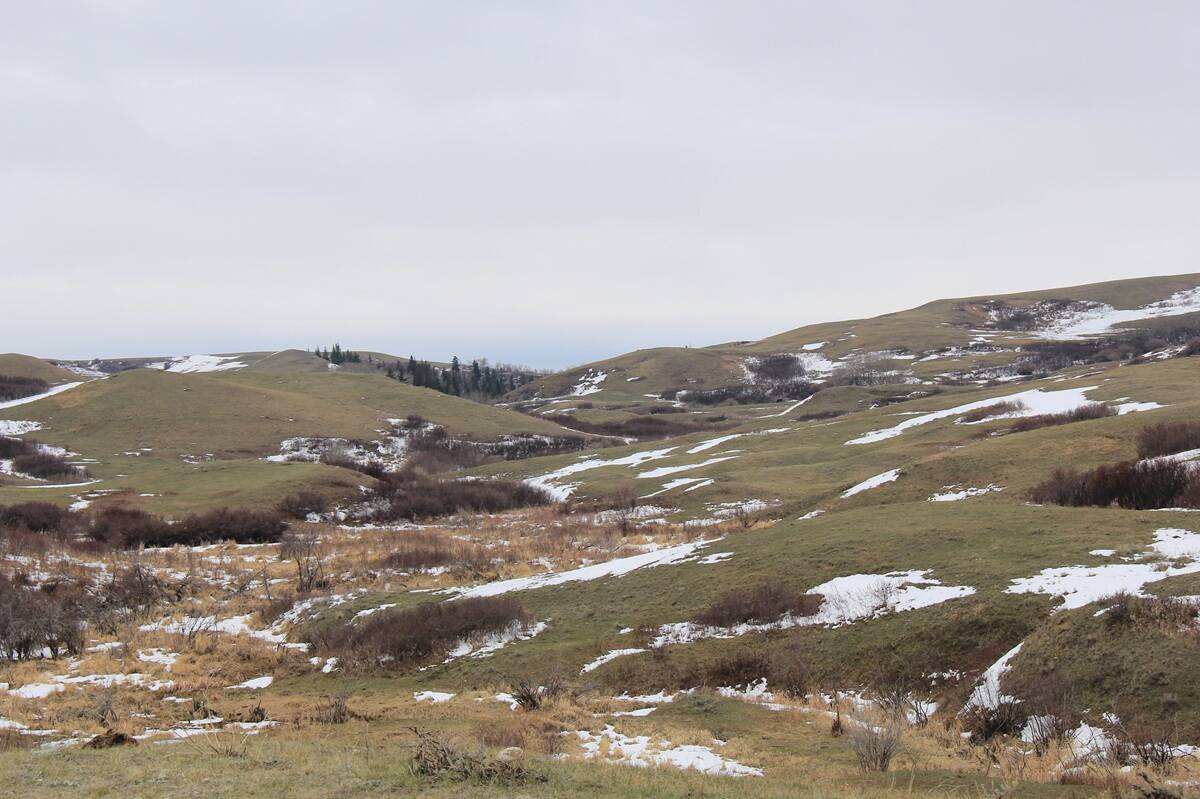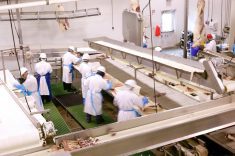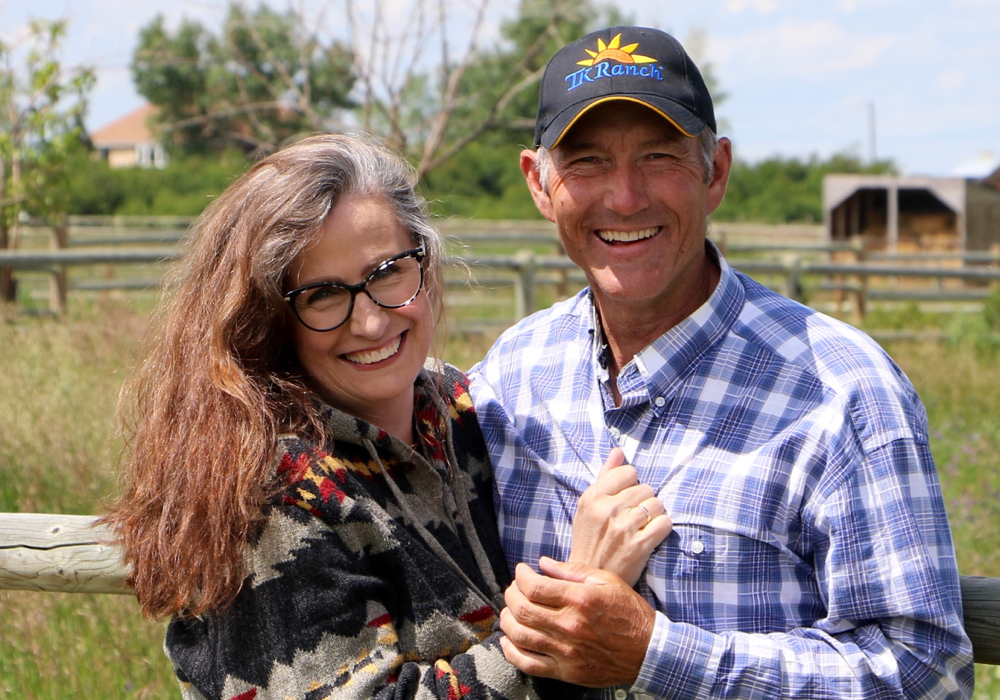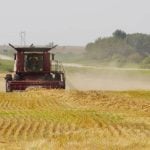Glacier FarmMedia – If you squeeze a few extra drops out of an orange while making juice, you’ll get an extra sip. But what if you squeezed out a few extra drops from 1,000 oranges? You’d get a lot more orange juice.
Why not apply the same principle to food production? After all, it boils down to the same simple principle — marginal gains theory.
The brainchild of British cycling coach David Brailsford, marginal gains theory is the concept of tiny changes that add up over time.
Read Also

Mission-focused leadership that inspires confidence, on the farm and beyond
Kelly Sidoryk on leadership styles and being an effective leader on the farm.
The theory’s three principles are:
- The change must be small, but the outcome must be large.
- The change should be easy or simple to apply.
- The change should be relatively inexpensive to deliver.
When Brailsford became performance director of the U.K.’s cycling team, the top of the podium seemed a long way away. But he was determined to change its fate, so he broke down everything that goes into riding a bike, then tried to improve each aspect by one per cent. His focus on small, yet critical, aspects of performance, such as power output, nutrition and physical fitness, won the team two gold medals at the 2004 Olympics in Athens, followed by several more at the Beijing and London Olympics.
The principle is malleable enough that it can be applied to weaning weights as easily as to riding a bike.
An example from James Byrne, an Ontario government beef cattle specialist, illustrates the theory with average daily gain at a feedlot.
If a producer buys a calf at 650 pounds and sells it at 1,520, then they need a gain of 2.2 pounds for 150 days and three pounds for the next 180 days. If those numbers improved by one per cent, the animal comes out weighing 1,528.7 pounds.
Sounds negligible, right? Well, that’s 8.7 pounds, and if you have 1,000 cows, that’s 8,700 pounds. That’s a significant bump in gross revenue, especially at today’s prices.
But remember, simple is one of the theory’s guiding principles. If a change isn’t easy to implement, the cost will be irrelevant, says Byrne. For example, if a feedlot operator adds yeast to the ration to reduce acidosis, the question becomes how to incorporate it into a TMR.
“If the practical application of it is challenging, then the producer is not going to adopt it, even if you ignore the cost of it, because it’s too onerous.”
Byrne points to the example of properly measuring pasture. It’s a highly beneficial practice, but it’s time-consuming and involves lots of work, running around and data entry. No sweat for a post-grad, but not practical for a farmer or rancher.
Ideally, for the theory to be at its functioning best, it must hit the trifecta. Success is possible with one or two boxes ticked, but when all three coincide, a producer starts to win big.
Byrne says that what often holds people back is getting stuck in their own minds at the starting line. They may have an idea of their end game, but how to get there is such a dizzying prospect that they do nothing, fearing the adjustment will be too difficult.
“For a producer who has never done it before, there’s a leap of faith involved and that’s where there’s another blockage in the system. Do you really believe it’s going to be successful? What is the change that I want to make?”
Small tweaks, big benefits
When Ryan Galbraith thinks about small changes at his Minnedosa, Man. farm, one of them doesn’t involve getting his hands dirty. The small gains he’s worked on are between the ears.
“Every bit of opportunity over the last few years has come to us and I think it’s just a switch in trying to figure out how to position yourself,” says Galbraith.
He is constantly thinking about ways to be more efficient at the family farm, which includes his brother and parents. Part of what drives that is his farm’s location. At the base of Riding Mountain National Park, Galbraith operates at an elevation between 1,600 and 2,000 feet above sea level. It means his growing season is shorter than the average Prairie farmer. All his decisions are more time-sensitive and must be meticulously thought out.
A small, incremental, yet always difficult, challenge for the young farmer has been delegation. When Galbraith returned to the farm 15 years ago, it was just him and his father. The two of them worked day in and day out, doing all the jobs themselves. Today, Galbraith is much better about delegating and has employees, a change with big rewards.
“In the early years, you feel like you can still do things better than the next person, but I’ve come to understand what freeing your time up as the manager can do for the operation. I spend a lot of time on bigger-picture thinking.”
Some changes are more easily quantifiable. For several years, the family had a granular fertilizer and seed tender truck as well as a liquid fertilizer tender truck. They made it work, but it meant their employee was run off his feet 12 to 16 hours a day managing both. So they combined everything into one unit and sped things up in the yard with a different sized auger for the fertilizer.
“All of a sudden, the guy had a spare hour or two every fill to do truck maintenance or work around the yard before he had to come back to the field. He could keep the yard a little tidier, too.”
Another change with a big gain was with their sprayer setup. They had a single small chemical handler and would splice every jug as they were filling the sprayer. The process itself usually took about 15 minutes per fill. That was a lot of down time, though. Galbraith decided a change was needed. So, he built his own dash trailer on a flat deck trailer. Today, they have four chemical handlers on the flat deck with chemical pre-loaded. The sprayer pulls up beside the trailer and chemical is pumped immediately.
“It went down from about 15-minute fills to five.”
The changeover cost about $80,000, but it was nearly a 100 per cent savings compared to buying a brand new version of what Galbraith made himself.
From calving to winter feeding
When it comes to cows, every little bit helps. Just ask Kyle Hebert, owner of Hebert Livestock Ventures near Wawota, Sask. Hebert and wife Crystal have zeroed in on a few key changes in recent years and the time and money they have in their back pocket attest to the changes’ positive benefits. The single most important change they’ve made over the years is moving their calving dates from February to May for their 950 cows.
Anyone who has calved in February understands the absolute challenge of it all: cow and calf in their most vulnerable states, freezing temperatures, at times a lack of help, shortage of space and more.
Hebert and crew first moved the dates from February to April over 10 years ago. However, April in his area can still be a treacherous month, with a couple of nasty storms almost guaranteed.
After the brutal calving season of 2020, they shifted the dates from April to May 2021. It was a significant change on top of their previously significant change moving to April calving. But the benefits were twofold. The May weather meant less stress on everyone, especially the animals. It also meant that they needed fewer people to manage calving.
“It’s made it so you can enjoy it,” Hebert says. “Most of us have cattle because we love calving cows. I always say that we get to play God for 60 days and to get 1,000 babies born in 50, 60 days. It’s a pretty fun time of year.”
Overall, this change reduced newborn mortality by two per cent. Amortized across so many animals, Hebert would never conceive of calving at any other time.
“On 1,000 calves that starts to pay for people’s wages.”
During the winter, the cows swath graze millet. Hebert builds a temporary fence, which takes about 90 minutes to construct, and moves his cows every four to five days.
Compared with using a mixer wagon to feed, Hebert saves about 170 hours over the winter by feeding this way. He also saves money and time by not having to put up feed and bring it home before taking it back out to the cows. That time has been converted into many things, including more time at the rink.
And sometimes an opportunity presents itself.
In 2021, the government’s farm and ranch water infrastructure program came available, and Hebert took advantage to trench two miles of pipe for remote winter watering. The cost was $25,000, but the government footed half the bill. It’s a big improvement over chopping a hole through the ice on the dugout. Plus, it keeps the cattle in the natural protection of the trees instead of in the open yard and cuts out having to pay an employee to clean up after the animals.
“It’s helped a lot with animal health and we’ve gained pounds on our calves just because they’re drinking clean water all the time.”
Hebert says the pregnancy rates have improved as well, which he partially attributes to healthier animals accessing clean water 24/7.
















